IMPROVE MY GAME
Articles
Why the Glutes Matter
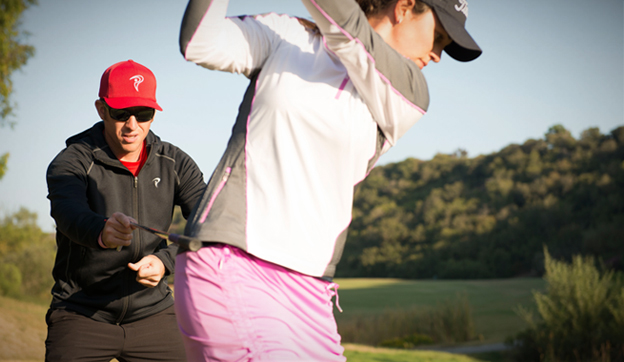
Whether it’s a Saturday tee time with the guys, a regional tournament, or a corporate outing to entertain clients, there remains a desire to perform, and perform well. Golfers come to me with one ultimate goal: play consistently well. It sounds quite vague, and yet is the very thing that separates amateurs from the pros. We play great sometimes. They play great most all of the time. Unfortunately, many people wait until there is a problem (example being back or knee pain), before they start addressing underlying mechanical and physiological issues. Naturally, the immediate response is to force an unnatural movement pattern or body position in efforts to fix the problem. It’s like putting tape where there needs to be a nail. Eventually, we’re back to square one.
There are many factors that culminate to produce a unique swing. I intentionally use the word “unique” because everyone’s swing is, and should be, different. Timing, address position, posture, strength discrepancies, mobility, balance, and flexibility are but a few variants among players. Ultimately, it is the correct sequential power production that is key. So in terms of what that actually looks like from person to person may vary, but the fundamental principles of proper swing mechanics and the contributing elements involved remain the same.
While there are numerous underlying issues I address with each individual golfer, there are certainly limitations that seem to be more common than others. We hear the word “core” thrown around all the time when it comes to an appropriate swing, but I want to briefly touch on something that comes to the forefront more often than core-strength issues among my golfers: the gluteal musculature…aka your butt.
This is not to underscore the importance of abdominal strength to stabilize the spine and maintain position through the coil and upon impact and follow through. That is certainly crucial. However, if power must generate from the ground upward, the ability to properly transfer through a strong torso position into the arms and club, lies in the strength and correct function of the glutes. Why the glutes? We’ll start with posture. The main function of the glutes during a golf swing is to stabilize the pelvis. Stability in this case encompasses strength, balance, and muscle endurance.
Upon address position, imagine your backside against a wall. Assuming a club could flow freely through this wall, you start into your backswing, reach the top position, continue the downswing, and then impact. When the glutes are firing correctly, your backside should not come off that wall. Remember, power production must begin from the ground. In order to generate maximum power by posting on the lead leg, the glutes must maintain pelvic position and firmly hold the low body as the upper body rotates around. When this is not the case and the glutes lack in one of the three characteristics listed above, you have two of the most common issues golfers face on the course: loss of posture and early extension. The body is smart and will figure out the easiest way to achieve a desired position or movement even if the pattern, rhythm, or muscles used are incorrect. In this case, it means elevating or aggressively throwing the lead hip into the downswing and through impact.
Now let’s dive further into the swing.
When a player coils into a backswing, ideally posture is maintained and the torso rotates on an axis in a distinct thorax-to-pelvis separation. Given that torso mobility is relatively normal for a player (over 70% of players have “good” mobility), the only muscles that can properly stabilize the pelvis to even allow such rotation and mobility are the glute maximus and glute medius. The glute maximus is the main stabilizer of the pelvis, while the glute medius is primary during lateral stabilization. When functioning correctly, the glute medius works to prevent excessive lateral movement during the backswing and then into the lead leg during the downswing. Without that stabilization, rotation is limited and thus the body resorts to the quickest way it knows how to generate more power without rotation = move laterally. The result: a sway and/or slide.
Functional Training
This is where homework off the course comes into play. As I said before, a golf swing is as unique as the player holding the club, but the fundamental elements related to proper power sequence remain the same. Training the body to load the correct muscles, rhythmically move through the entire swing, and allow maximum stability and mobility at the same time is the goal. Thus, the glutes must be strong and able to function properly.
Given that a golf swing is a complex movement, I like to incorporate exercises with my golfers that hit a few elements at the same time (more conducive to the sport itself). Here are 2 examples:
Drop-back lunge with rotation
Start with feet together and step back into lunge position. *Weight load needs to remain in the heel of the front leg.
Rotate over the front leg and then come back into a standing, balanced position. The push-off back to starting position always comes from the front leg.
Perform 2-3 sets for 10 reps on each side.
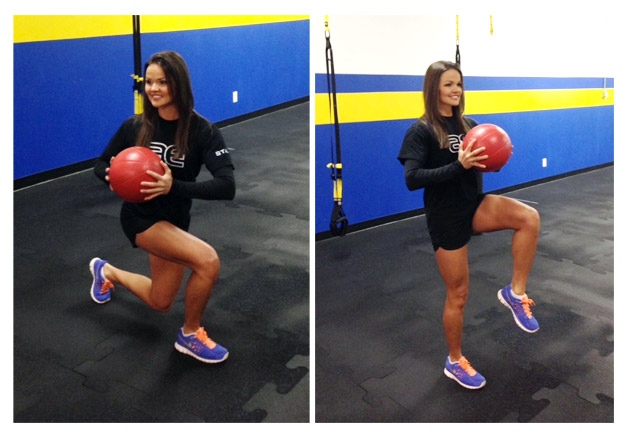
Squat/post-up rotation
Start from standing position (feet a little outside of shoulder width).
Keeping torso straight and weight in the heels, squat down to 90* or to where is manageable with proper form.
From the squat position, drive up into the left heel, posting up and extending the roller/ball/club overhead into a fully rotated position over the lead leg. (Repeat on other leg).
Perform 2-3 sets for 10 reps in each direction.
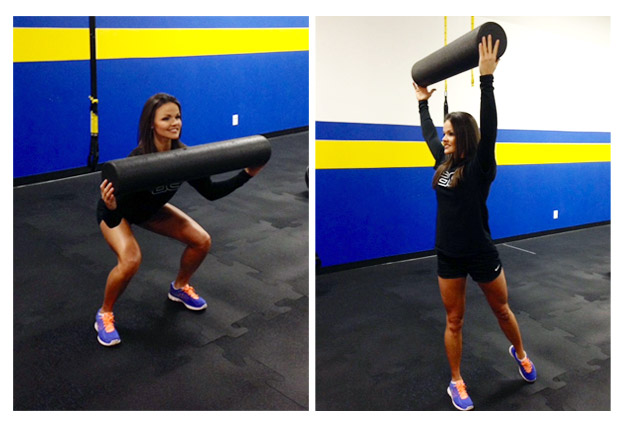
I’ve also included three of my favorite glute-centric exercises from the MyTPI exercise library. Try incorporating these into you workout regimen to help get those glutes firing during the golf swing.
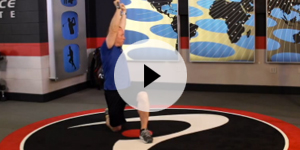
Half-Kneeling Step Outs with Rotation
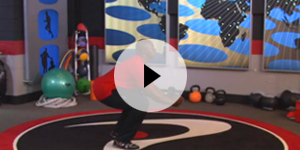
Squat Jumps
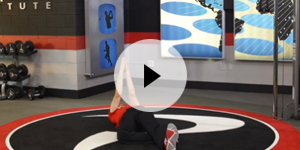
Figure 4 Horizontal Bridge
